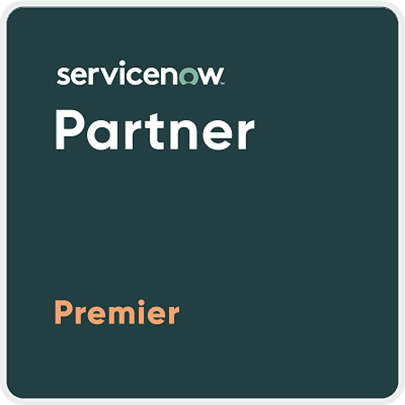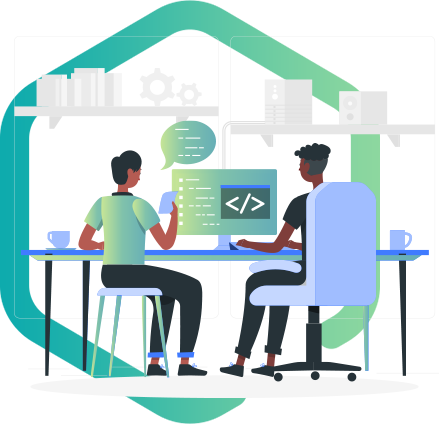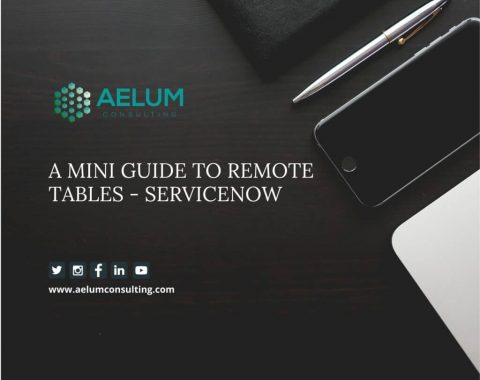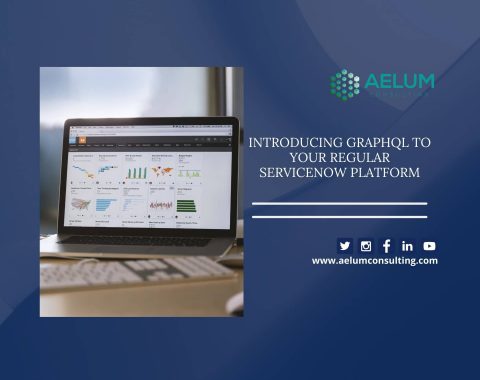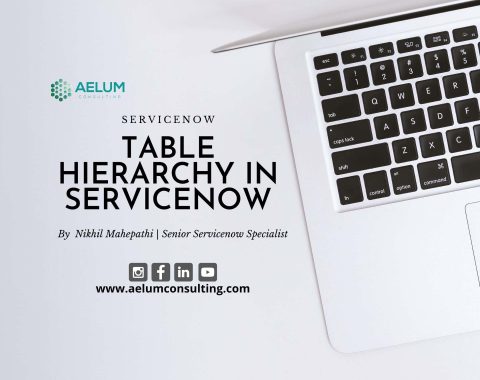Deliver software, products, and services projects faster and more efficiently by managing and tracking software development life cycles with ServiceNow Agile Development.
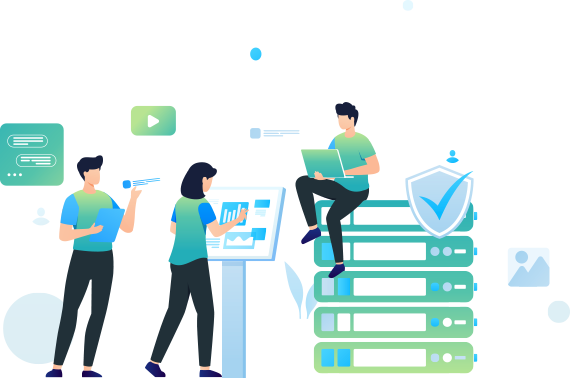
Agile Development
- ServiceNow provides a set of tools and processes for managing Agile projects, including backlog management, sprint planning, and release management.
- Built on the Now Platform and part of the ServiceNow Strategic Portfolio Management product offering, the Agile Development application allows teams to collaborate in real time, track progress and work items, and visualize project status through dashboards and reports.
- It also integrates with other ServiceNow products, such as IT Service Management and IT Operations Management, to provide end-to-end visibility and automation across the entire software development lifecycle.
Agile Development Process
-
Planning
Agile development begins with a planning phase to identify project goals, scope, requirements, and constraints. The product owner, stakeholders, and the development team collaborate to prioritize the project backlog and define the objectives for the upcoming iterations.
-
Iteration
Agile development is an iterative process, and each iteration typically lasts 1-4 weeks. The development team works on specific sets of features or user stories during each iteration process. And they are expected to deliver perfectly working software at the end of each iteration.
-
Stand-up meetings
Stand-up meetings are brief daily meetings where the development team meets to discuss progress, any obstacles, and plans for the day. These meetings help to ensure everyone is on the same page and to identify and address any encountered issues quickly.
-
Development
The development phase involves the actual coding and implementation of the software features. The development team works closely with the product owner and stakeholders to ensure the produced software meets the exact requirements and expectations as needed.
-
Testing
Testing is an integral part of Agile development, and the development team performs testing throughout the process. It includes unit testing, integration testing, and acceptance testing. They identify defects early in the development cycle & provide high-quality software.
-
Review and Retrospective
At the end of each iteration, the development team meets with the product owner and stakeholders to review the progress, demonstrate the software, and gather feedback. They also hold a retrospective meeting to reflect on the process and identify improvement areas.
-
Deployment
Deployment is the final stage of the Agile development process, releasing the software product to the production environment. Transfers the software code from the development environment to the production environment, configuring the software to run and testing the software.
-
Maintenance
The development team resumes monitoring and maintaining the software to ensure it is reliable, secure, and up-to-date. It has bug fixes, security updates, & performance optimizations. It confirms the software product remains functional and meets the end-user needs.
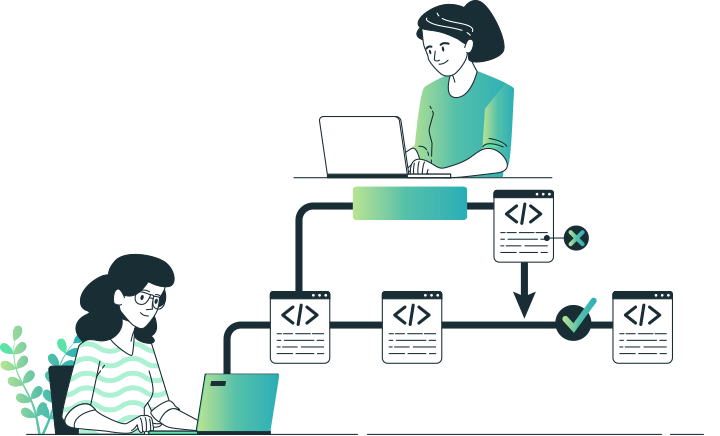
Agile Development Benefits
Improved Time-to-Market
Enables teams to deliver working software in shorter time frames, allowing companies to respond to changing market demands.
Enhanced Collaboration
Encourages collaboration within the organization, leading to better communication, increased understanding, and faster problem-solving.
Improved Communication
Emphasizes regular communication and collaboration, ensuring everyone is on the same page and working towards the same organizational goals.
Increased Transparency
Provides visibility into the project’s progress, enabling monitor project status, making informed decisions, and addressing issues promptly.
Continuous Improvement
Encourages teams to continuously improve their processes and practices, which leads to increased efficiency, productivity, and quality.
Increased Employee Engagement
Empower teams to take ownership of their work, collaborate with others, and improve continuously for employee engagement and job satisfaction.
Increased Flexibility
Adapt to changes in requirements, allowing teams to respond to new information and adjust the project scope as needed for flexible work.
Greater Customer Satisfaction
Focuses on delivering working software that meets the needs of every customer, which leads to higher levels of customer satisfaction.
Reduced Risk
Break down projects into smaller, manageable chunks, reducing the risk of large-scale project failures and creating better solutions and ways out.
Early and Continuous Feedback
Emphasize continuous feedback from stakeholders, enabling teams to adjust their approach, refine their work, and improve the product.
Reduced Costs
Focus on delivering value promptly and minimizing waste, which can lead to reduced costs associated with rework, delays, and other inefficiencies.
Improved Risk Management
Enable teams to identify and mitigate risks early in the development process, reducing the likelihood of project failures and delays.
Agile Development Features
Iterative and Incremental Development
It means the built software is in small increments or iterations. With each iteration delivers working software that can be reviewed and evaluated.
Customer Collaboration
Ensure the developed software meets the customer’s needs, emphasizing collaboration between the development team and users.
Adaptive Planning
Emphasizes adaptive planning, which involves planning and re-planning based on feedback and recognizing changing needs and priorities.
Continuous Integration and Testing
It means code is integrated and tested frequently throughout the process, catching defects early & ensuring the software is high quality.
Focus on Value
The development team focuses on delivering software that meets the customer’s needs rather than simply following a set of predefined tasks
Time-boxed Iterations
Involve breaking down the development into time-boxed iterations or sprints, ensuring the team stays on track and makes regular progress.
ServiceNow for Agile Development
Backlog Management
ServiceNow provides a flexible and customizable backlog management system, supporting the Agile development process. This system allows teams to create, prioritize, and manage user stories, bugs, and other issues.
Collaboration and Communication
ServiceNow is a collaborative platform enabling teams to work together effectively. It provides features for sharing data, team member interaction, and task collaboration. Also, it includes chat and messaging tools to facilitate real-time communication.
Integration with Other Tools
ServiceNow integrates with a wide range of third-party tools and systems, including development, testing, and project management tools. This integration enables teams to streamline workflows, eliminate manual tasks, and increase efficiency.
Portfolio Management
ServiceNow enables managing an entire portfolio of software development projects using Agile. It provides tracking project status, monitoring progress, & identifying resource constraints. Prioritize projects based on business value & goal alignment.
Agile Dashboards
ServiceNow provides pre-built, customizable Agile dashboards that enable teams to monitor project progress, identify risks, and track KPIs. The dashboards provide real-time visibility into project status and allow teams to make data-driven decisions.
Sprint Management
ServiceNow enables teams to plan, execute, and monitor sprints using Agile. It allows teams to set sprint goals, select backlog items to work on, estimate effort, and track progress. Also, it operates daily meets, sprint reviews, & retrospectives.
Reporting and Analytics
ServiceNow provides powerful reporting & analytics capabilities helping teams to monitor progress, identify bottlenecks, & make data-driven decisions. It includes pre-built reports & dashboards and the ability to create custom reports and visualizations.
Release Management
ServiceNow enables teams to plan & manage software releases using Agile. It provides features to create and manage release plans, track progress, & coordinate. Also, it supports continuous integration and delivery integrating with DevOps tools.
Agile Scrum Board
ServiceNow provides an Agile development Scrum board that supports the visualization of work items and status tracking. The Scrum board is highly customizable and provides features for managing sprint tasks, backlog items, and team capacity.
Agile Process Automation
ServiceNow enables teams to automate routine Agile processes using workflows and automation rules. For example, teams can automate the creation of backlog items, assign tasks to teams, and send notifications based on specific events or triggers.
Agile Development Roles
Product Owner
Responsible for defining and prioritizing the product backlog, a list of features, enhancements, and fixes needed to develop. The product owner works closely with stakeholders and the development team to ensure the software meets the business requirements and customer needs.
Development Team
Responsible for estimating the effort required to complete the work and delivering working software at the end of each iteration. The development team includes developers, testers, designers, and other technical experts who work together to implement the software features.
Scrum Master
Responsible for ensuring they follow the Agile process and facilitating collaboration and communication between the product owner, development team, and stakeholders. They also help remove obstacles that may be preventing the team from working efficiently and effectively.
Stakeholders
Individuals or groups are interested or staked in the software development project. It includes end-users, customers, managers, and others impacted by the software. Stakeholders provide feedback and input during the entire process to ensure the software meets their needs.
Agile Coach
A person with extensive experience in Agile development helps teams to implement Agile practices and principles effectively. The coach works with the team to identify improvement areas, provides guidance and support, and helps create a culture of continuous improvement.
User Experience (UX) Designer
Responsible for designing the user interface & user experience of the software. The UX designer works with the product owner and development team to ensure the software is easy to use, intuitive & meets the user’s needs. They create user personas and use wireframes & prototypes.
How Can Aelum Consulting Help with ServiceNow Agile Development?
Aelum Consulting is a Premier ServiceNow partner specializing in helping organizations implement and optimize their ServiceNow instances. We can help with ServiceNow Agile development by providing the following services:
ServiceNow Agile implementation
We can help organizations implement ServiceNow Agile using industry best practices. It includes setting up Agile workflows, configuring boards, and integrating tools with other modules.
ServiceNow Agile Optimization
We can help organizations optimize their ServiceNow Agile implementation by identifying areas for improvement, streamlining processes, and automating manual tasks.
ServiceNow Agile training
We can provide team training and support to become more proficient with ServiceNow Agile. It includes training on Agile methodologies, ServiceNow tools, and best practices.
ServiceNow Agile reporting and analytics
We can help leverage the ServiceNow reporting and analytics into Agile development processes. It includes setting KPIs & tracking metrics like velocity, cycle time, & burn-down charts.
ServiceNow Agile integration
We can help integrate ServiceNow Agile with third-party tools and systems. It includes setting integrations, configuring data flows, and automating data exchange between systems.
ServiceNow Agile customization
We can help customize ServiceNow Agile to meet specific needs. It includes creating custom fields, workflows, and notifications & developing custom integrations with other systems.
ServiceNow Agile governance
We can help establish governance processes to ensure ServiceNow Agile adheres to organizational standards, policies, & regulations. It includes defining duties, approval workflows, & audit trails.
ServiceNow Agile Mentoring
We can provide mentoring to help optimize ServiceNow Agile development practices. It includes guiding Agile methodologies, facilitating ceremonies, and offering feedback.
ServiceNow Agile project management
We can provide project management services to help organizations plan, execute, and deliver ServiceNow Agile development projects. It includes setting up plans, monitoring progress, & managing risks.
ServiceNow Agile roadmap planning
We can help develop a ServiceNow Agile roadmap aligned with business goals and priorities. It includes identifying improvement areas, setting goals, and implementing ServiceNow Agile development.
By partnering with Aelum Consulting, organizations can leverage the expertise of experienced ServiceNow consultants to optimize their Agile development processes and achieve better outcomes. We can provide tailored solutions to meet each organization’s unique needs and help them achieve their goals for Agile development using the power of the ServiceNow platform.
Agile Development Best Practices
Prioritize customer satisfaction
Put customer satisfaction at the top of the priority lists. Hence, teams should always focus on delivering value to customers through continuous collaboration, feedback, and improvement.
Adopt an iterative approach
An iterative approach that involves short cycles of planning, executing, and delivering. Teams should break down work into smaller, manageable chunks and deliver value incrementally.
Foster collaboration and communication
Rely on collaboration and communication among teams, users, and stakeholders. Teams should foster open communication, encourage reviews, & involve stakeholders in various processes.
Practice Agile rituals
Teams should practice & use these rituals as opportunities to align, plan, and reflect on their work. Includes several rituals, like daily stand-up meetings, sprint planning, or retrospectives
Use Agile metrics
Teams should use these metrics to measure progress, identify bottlenecks, and improve their processes. Includes several metrics, such as velocity, burn-down charts, and cycle time
Embrace change
Based on the principle of embracing change. Teams should expect changes in requirements, priorities, and deliverables and should be able to adapt to those changes quickly.
Practice continuous improvement
A continuous improvement approach. Teams should regularly reflect on their work, gather feedback, and look for opportunities to improve their processes, tools, and techniques.
Empower the team
Empower teams to make decisions, take ownership of their work, and self-organize. Give autonomy to decide how to approach their work & support with the right tools, resources, & training.
Focus on quality
Emphasize delivering quality software meeting customer needs. Teams should focus on building quality into their processes and use practices to ensure their code is always releasable.
Continuously learn and improve
Teams should embrace a growth mindset, experiment with new ideas, and continuously seek review to drive their development forward through continuous learning and improvement.
Frequently Asked Questions
Agile Development Model is an iterative and incremental approach to software development that focuses on delivering small, working pieces of software frequently.
Agile Development Environment is a collaborative and flexible work environment that promotes teamwork, communication, and continuous improvement.
Agile Development Methodology is a set of principles and practices that guide software development teams to deliver high-quality software products quickly and efficiently.
Yes, Aelum Consulting can integrate ServiceNow BCM with other ServiceNow applications as well as third-party systems to provide a more holistic view of an organization’s operations and risks.
Agile Development Scrum is a framework that enables teams to work collaboratively on complex projects by breaking them down into smaller, more manageable pieces.
Agile Development Kanban is a visual project management tool that helps teams manage their work by visualizing the workflow, limiting work in progress, and optimizing the flow of work.
Agile development and deployment can be challenging in projects that require extensive planning, have rigid deadlines, or involve large, geographically dispersed teams.
The 4 core values of Agile are:
- Individuals and interactions over processes and tools
- Working software over comprehensive documentation
- Customer collaboration over contract negotiation
- Responding to change by following a plan
Yes, Agile project management principles and practices can be used outside software development in various industries, including construction, marketing, and healthcare.
Our Clients







































